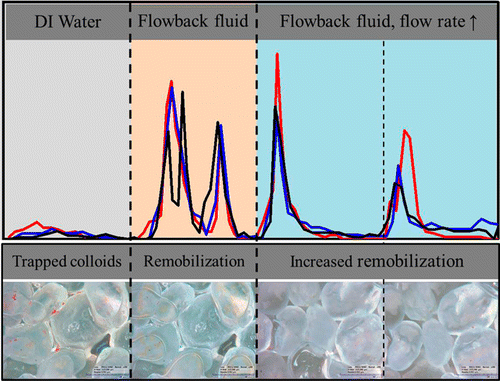Another concern arises over groundwater contamination from fracking accidents

The oil and gas extraction method known as hydraulic fracturing, or fracking, could potentially contribute more pollutants to groundwater than past research has suggested, according to a new study in ACS' journal Environmental Science & Technology. Scientists are reporting that when spilled or deliberately applied to land, waste fluids from fracking are likely picking up tiny particles in the soil that attract heavy metals and other chemicals with possible health implications for people and animals.
Tammo S. Steenhuis and colleagues note that fracking, which involves injecting huge volumes of fluids underground to release gas and oil, has led to an energy boom in the U.S. But it has also ignited controversy for many reasons. One in particular involves flowback, which refers to fluids that surge back out of the fracked wells during the process. It contains water, lubricants, solvents and other substances from the original fracking fluid or extracted from the shale formation. High-profile spills and in some places, legal application of these liquids to land, have raised alarms. Research has linked fracking to groundwater contamination that could have major health effects. But another factor that no one has really addressed could play a role: colloids. These tiny pieces of minerals, clay and other particles are a concern because they attract heavy metals and other environmental toxins, and have been linked to groundwater contamination. Steenhuis' team set out to take a closer look.
To simulate what would happen to colloids in soil after a fracking spill, the researchers flushed flowback fluids through sand with a known amount of colloids. They found that the fluids dislodged about a third of the colloids, far more than deionized water alone. When they increased the flow rate, the fluids picked up an additional 36 percent. "This indicates that infiltration of flowback fluid could turn soils into an additional source of groundwater contaminants such as heavy metals, radionuclides and microbial pathogens," the scientists conclude. More research with real soils is planned.
More information: "Effect of Hydrofracking Fluid on Colloid Transport in the Unsaturated Zone" Environ. Sci. Technol., Article ASAP. DOI: 10.1021/es501441e
Abstract
Hydraulic fracturing is expanding rapidly in the US to meet increasing energy demand and requires high volumes of hydrofracking fluid to displace natural gas from shale. Accidental spills and deliberate land application of hydrofracking fluids, which return to the surface during hydrofracking, are common causes of environmental contamination. Since the chemistry of hydrofracking fluids favors transport of colloids and mineral particles through rock cracks, it may also facilitate transport of in situ colloids and associated pollutants in unsaturated soils. We investigated this by subsequently injecting deionized water and flowback fluid at increasing flow rates into unsaturated sand columns containing colloids. Colloid retention and mobilization was measured in the column effluent and visualized in situ with bright field microscopy. While <5% of initial colloids were released by flushing with deionized water, 32–36% were released by flushing with flowback fluid in two distinct breakthrough peaks. These peaks resulted from 1) surface tension reduction and steric repulsion and 2) slow kinetic disaggregation of colloid flocs. Increasing the flow rate of the flowback fluid mobilized an additional 36% of colloids, due to the expansion of water filled pore space. This study suggests that hydrofracking fluid may also indirectly contaminate groundwater by remobilizing existing colloidal pollutants.
Journal information: Environmental Science & Technology
Provided by American Chemical Society















